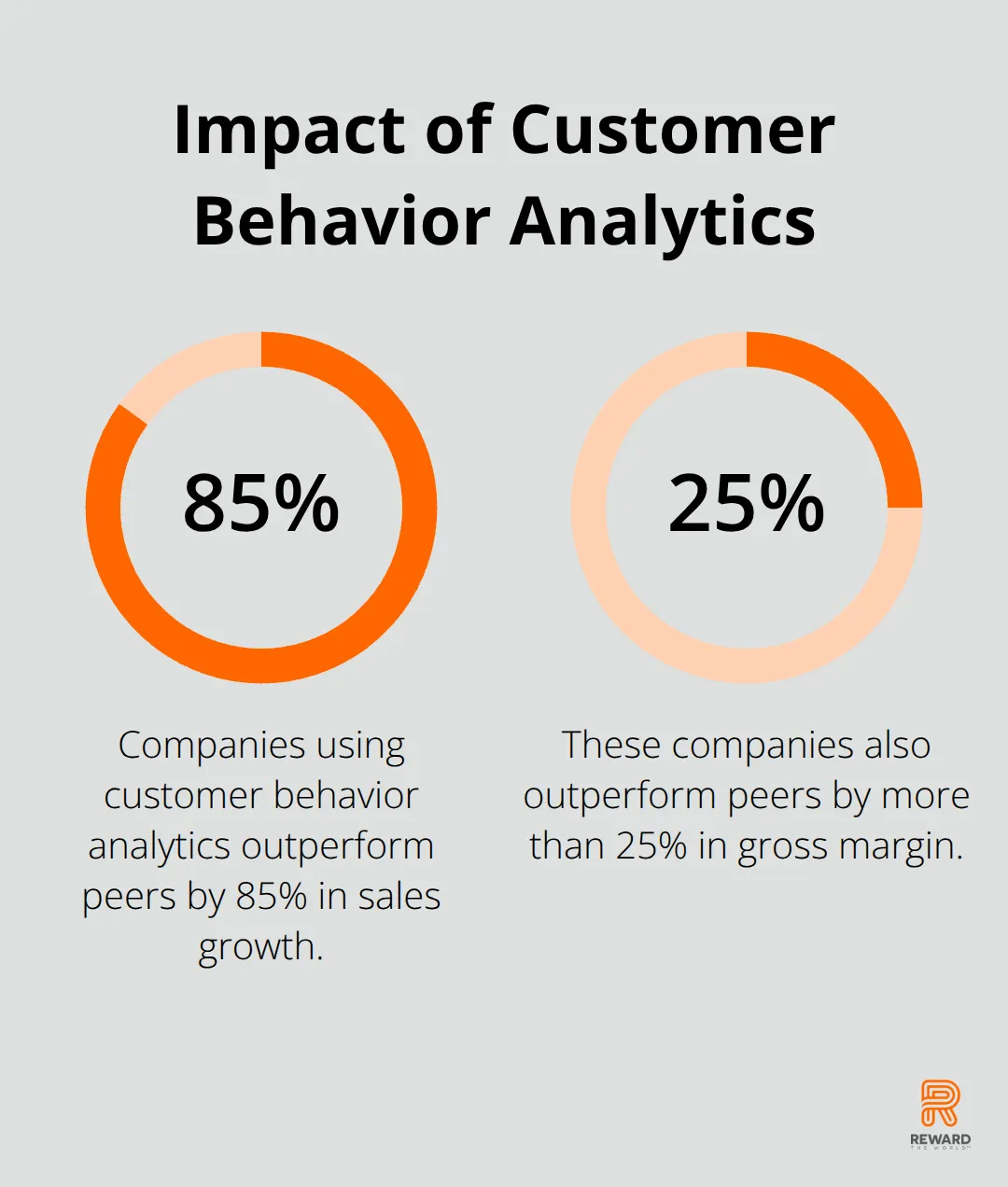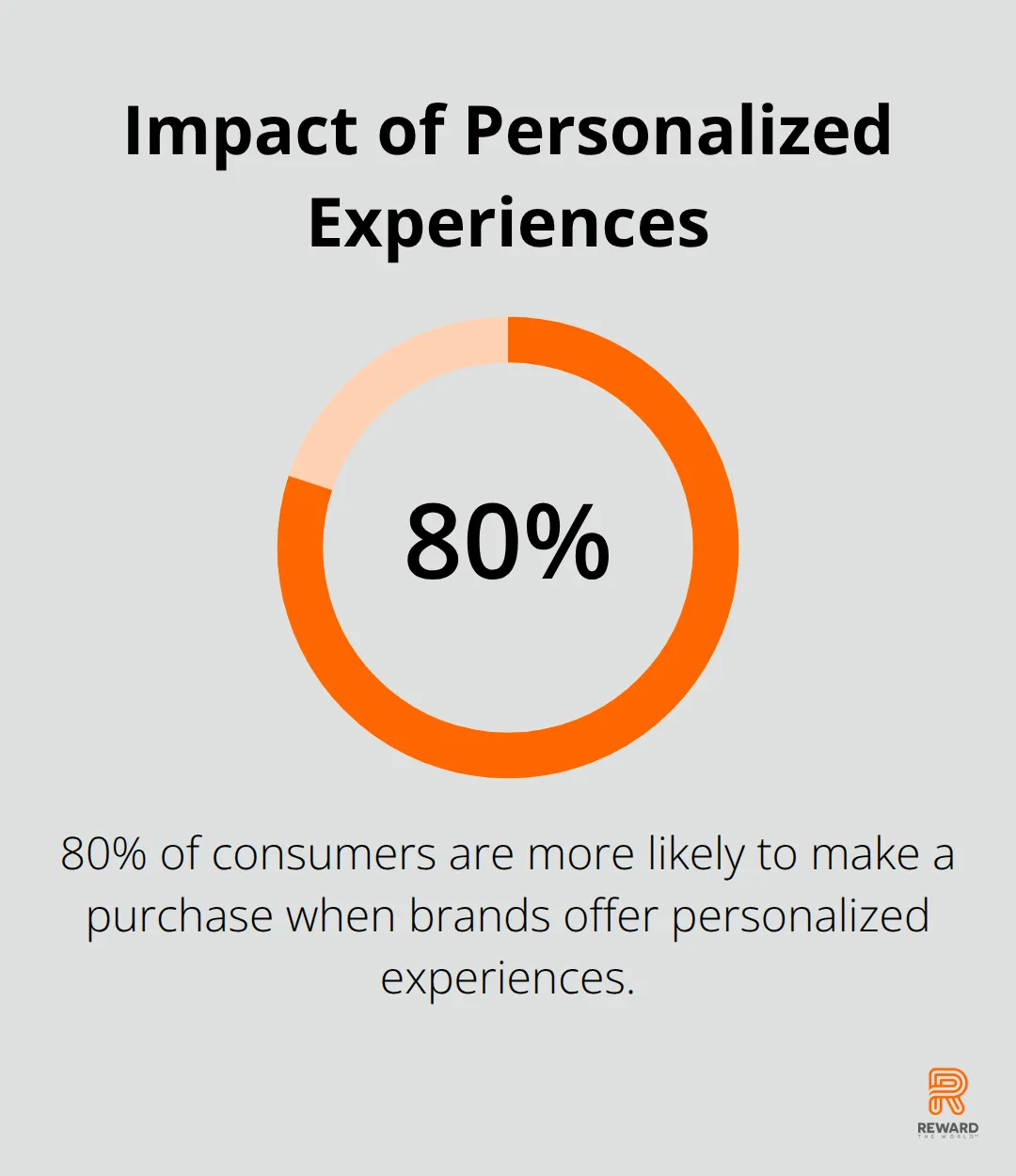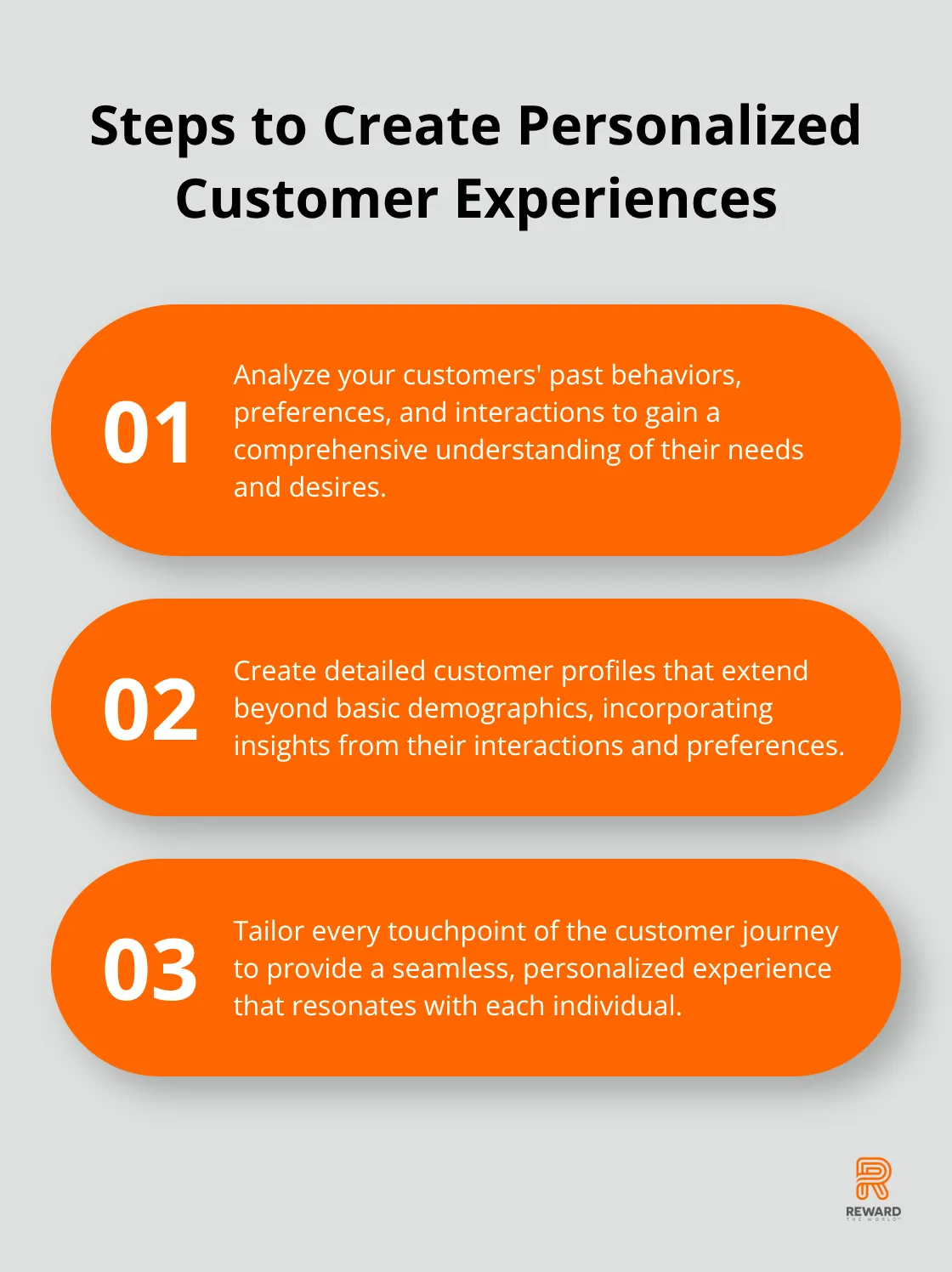
Loyalty programs have become a cornerstone of customer retention strategies. However, the true power lies in the data these programs generate.
At Reward the World, we’ve seen firsthand how loyalty analytics can transform raw data into actionable insights. This blog post will explore how businesses can harness loyalty data to drive growth, enhance customer experiences, and boost their bottom line.
Unlocking Customer Insights
Decoding Customer Behavior
Loyalty data reveals patterns that often go unnoticed. A McKinsey study found that companies using customer behavior analytics outperform peers by 85% in sales growth and more than 25% in gross margin. Analysis of purchase frequency, product preferences, and engagement levels allows businesses to tailor their offerings to match customer needs precisely.

A retail client using our platform discovered their most loyal customers made purchases every 45 days on average. This insight prompted a targeted email campaign timed to coincide with this purchasing cycle, resulting in a 20% increase in repeat purchases.
Spotting Your VIP Customers
Identification of high-value customers maximizes returns on loyalty investments. The Pareto principle, also known as the 80-20 rule, often applies here – it states that 20% of causes drive 80% of outcomes. Data analysis tools help businesses pinpoint these valuable customers quickly.
A telecommunications company we worked with found their top 10% of customers accounted for 60% of their revenue. Offering these customers exclusive rewards and personalized services increased retention rates by 15% and boosted overall customer lifetime value.
Forecasting Future Purchases
Predictive analytics transforms loyalty data into a powerful tool. Analysis of historical purchase data allows businesses to anticipate future buying behaviors with remarkable accuracy. Effective recommendation engines consistently deliver 10-30% increases in average order value across ecommerce and content platforms.
An e-commerce client used predictive models to forecast seasonal buying trends. This allowed them to optimize inventory levels and create targeted promotions, resulting in a 25% reduction in overstock and a 15% increase in seasonal sales.
Practical Steps for Businesses
- Invest in robust data analytics tools that process large volumes of loyalty data quickly.
- Train your team to interpret data insights and translate them into actionable strategies.
- Review and update your loyalty program regularly based on data-driven insights.
- Use A/B testing to refine your loyalty strategies and maximize their effectiveness.
The Power of Data-Driven Decision Making
Data-driven decision making transforms businesses. This underscores the importance of not just collecting data, but actively using it to inform strategy.
Companies like Reward the World offer platforms that not only collect loyalty data but also provide tools to analyze and act on these insights. This combination of data collection and analysis capabilities (often in real-time) gives businesses a significant competitive edge.
As we move forward, we’ll explore how to leverage these insights through advanced data analytics, turning raw loyalty data into powerful strategies for growth and customer retention.
How Data Analytics Supercharges Your Loyalty Program
Data analytics transforms loyalty programs from simple point-collection systems into powerful engines of customer engagement and business growth. This chapter explores how you can leverage these insights to create a loyalty program that truly resonates with your customers.
Precision Targeting Through Segmentation
One-size-fits-all marketing is obsolete. Data analytics allows for hyper-segmentation of your customer base, which enables you to craft messages and offers that speak directly to each group’s unique preferences and behaviors.
A study by Epsilon found that 80% of consumers are more likely to make a purchase when brands offer personalized experiences. Analysis of purchase history, browsing behavior, and demographic data creates segments that go beyond basic categories like age or location.

For instance, a fashion retailer identified a segment of customers who consistently purchased accessories but rarely bought clothing. The retailer targeted this group with accessory-focused promotions and styling tips, which resulted in a 35% increase in average order value for this segment.
Tailoring Rewards for Maximum Impact
Personalization extends beyond marketing messages to the very heart of your loyalty program: the rewards themselves. Data analytics reveals which rewards resonate most with different customer segments, which allows you to optimize your offerings for maximum engagement.
A restaurant chain discovered that their millennial customers preferred experiential rewards (like cooking classes or meet-the-chef events), while older customers favored traditional discounts. The chain tailored their reward offerings accordingly and saw a 28% increase in program participation across all age groups.
Measuring and Optimizing Program Performance
Data analytics provides real-time insights into program performance, which allows for continuous optimization. Key metrics to track include:
- Redemption rates: Low redemption rates might indicate unappealing rewards or difficulty in earning points.
- Customer Lifetime Value (CLV): A well-designed loyalty program should increase CLV over time.
- Engagement frequency: This metric shows how often members interact with your program.
- Net Promoter Score (NPS): NPS measures how likely customers are to recommend your brand to others.
A hotel chain noticed that their redemption rates fell despite high point accumulation. Further analysis revealed that their top-tier rewards were too expensive for most members to reach. The introduction of more mid-range reward options increased redemption rates by 45% and boosted customer satisfaction scores.
The Power of Predictive Analytics
Predictive analytics takes loyalty programs to the next level. This advanced technique uses historical data to forecast future customer behavior, which allows businesses to proactively engage members and prevent churn. Predictive analytics enables targeted marketing efforts, personalized customer experiences, and the ability to swiftly adapt to changing market dynamics.
For example, a retail company used predictive models to identify customers at risk of becoming inactive. The company then created targeted re-engagement campaigns, which resulted in a 20% reduction in customer churn rate.
As we move forward, we’ll explore how these data-driven insights translate into concrete strategies for creating personalized customer experiences and optimizing reward structures. The next section will show you how to implement these strategies effectively in your loyalty program.
How to Transform Loyalty Data into Actionable Strategies
At Reward the World, we’ve observed numerous businesses struggle to convert their wealth of loyalty data into tangible results. The solution lies in the implementation of data-driven strategies that directly impact customer experiences, reward structures, and retention rates. This chapter explores how you can put your loyalty data to work effectively.
Create Personalized Customer Experiences
Personalized customer experiences are now a standard expectation. To achieve this level of personalization:

A major coffee chain used purchase history data to identify customers who always bought pastries with their morning coffee. They sent these customers personalized offers for new pastry items, which resulted in a significant increase in add-on sales.
Optimize Your Reward Structure
Your reward structure forms the backbone of your loyalty program. Data insights can help you strike the perfect balance between enticing rewards and program profitability.
Analyze redemption patterns to understand which rewards appeal most to different customer segments. Ask yourself: Do high-value customers redeem different rewards than occasional shoppers? Use this information to adjust your reward tiers and offerings.
A hotel chain discovered that their business travelers rarely redeemed points for free nights, preferring instead to use them for airport lounge access and travel upgrades. The expansion of these options and their promotion to this segment led to an increase in point redemption among business travelers.
Consider the timing of your rewards as well. Data might reveal that customers engage more with your program at certain times of the year or after specific life events. Use these insights to time your offers for maximum impact.
Predict and Prevent Customer Churn
Customer retention often proves more cost-effective than acquisition, and predictive analytics serves as a powerful tool in this effort. The analysis of historical data allows you to identify patterns that indicate a customer’s risk of churning.
Look for signs such as:
- Decreased purchase frequency
- Reduced engagement with communications
- Changes in browsing behavior
Once you’ve identified these indicators, set up automated triggers to re-engage at-risk customers before they leave.
An e-commerce platform reduced churn using this approach. They identified that customers who hadn’t made a purchase in a certain period were at high risk of churning. The platform then triggered a personalized re-engagement campaign, offering these customers exclusive discounts on products similar to their past purchases.
The implementation of these data-driven strategies requires continuous analysis, testing, and refinement. With the right approach and tools (such as those offered by Reward the World), you can transform your loyalty program from a simple points system into a powerful engine for growth and customer satisfaction.
Final Thoughts
Data-driven loyalty programs revolutionize customer engagement strategies. Companies now access unprecedented insights into consumer behavior through loyalty analytics. These capabilities lead to increased customer satisfaction, higher retention rates, and improved bottom lines.
The future of loyalty data analytics will involve more sophisticated AI and machine learning algorithms. These advancements will process vast amounts of data in real-time, providing nuanced insights. The integration of loyalty data with other business metrics will become more seamless, allowing for a holistic view of customer interactions.
We at Reward the World have witnessed how our global incentives platform transforms businesses through powerful loyalty analytics tools. Our turnkey solution helps companies implement data-driven loyalty strategies, deliver instant rewards, and gain valuable insights into customer behavior. The time to act is now.
